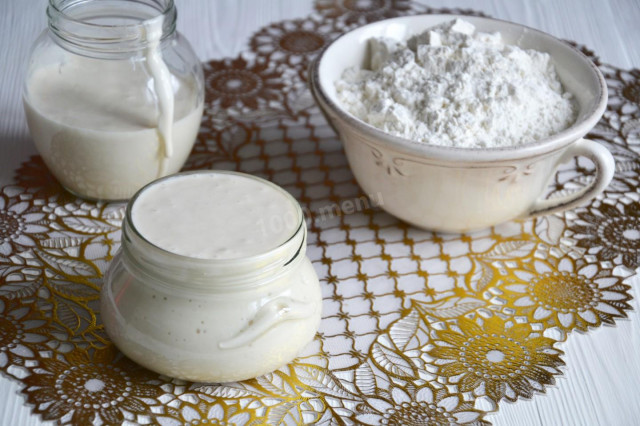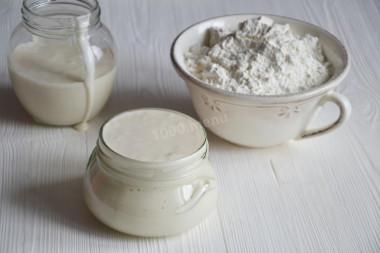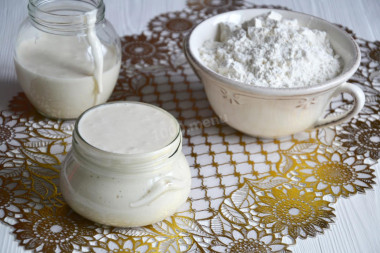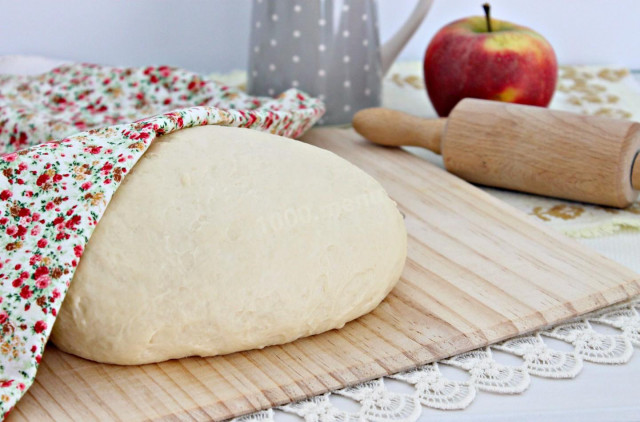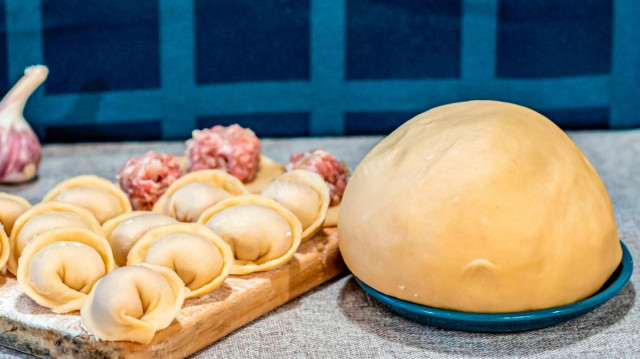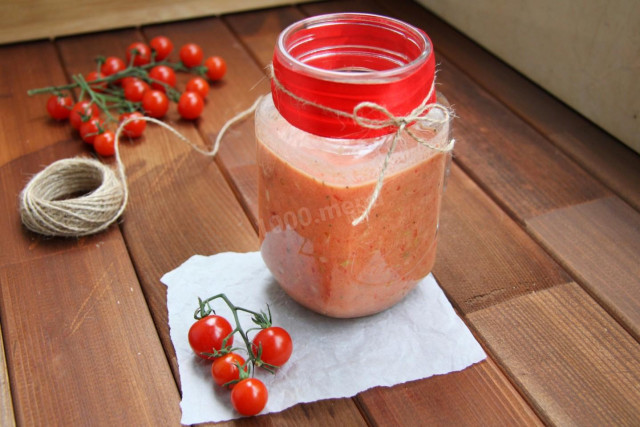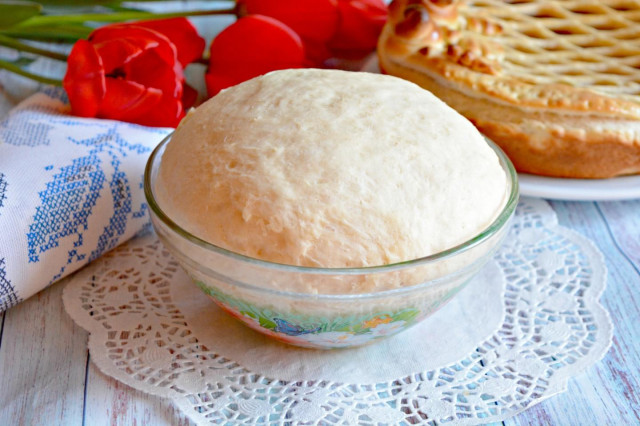Composition / ingredients
Step-by-step cooking
Step 1:
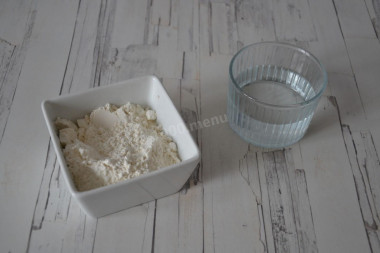
Prepare the ingredients. To prepare the starter, we need only wheat flour and clean drinking water at room temperature.
Step 2:
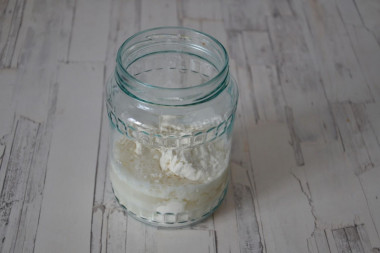
So first we fall asleep in a jar in which we will grow sourdough, 100 g of wheat flour. Pour 100 ml of water.
Step 3:

Mix everything thoroughly so that the flour and water are completely combined. A viscous homogeneous mass should be obtained. I knead the starter with a fork.
Step 4:
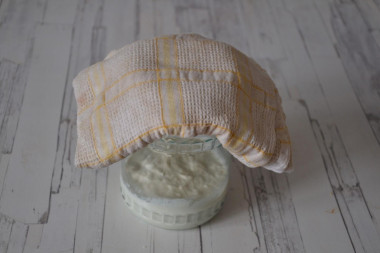
Next, the starter must be covered with a towel (but not with a lid, since the starter must breathe). And put the jar in a dark, warm and dry place. I have this corner cabinet not far from the oven. It's always warm there. Leave the starter for 2 days. During this time, you can mix the contents of the jar 2-3 times.
Step 5:
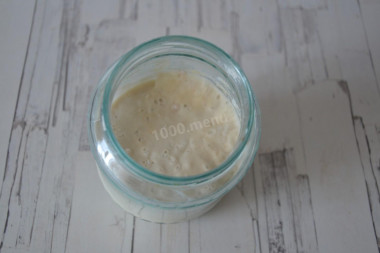
After two days, bubbles should appear on the surface of your starter culture. This means that the fermentation process has started.
Step 6:
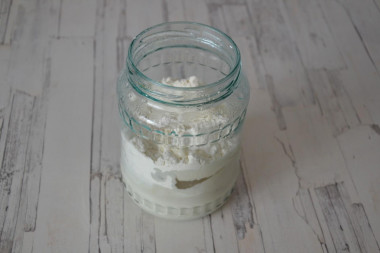
Next, remove almost all the starter culture from the jar and throw it away, leaving only 30 g. Pour 50 g of flour and 50 ml of water to 30 g of starter culture. Mix the water and flour with the leaven remaining in the jar. And put it in a warm, dry place for 1 day.
Step 7:
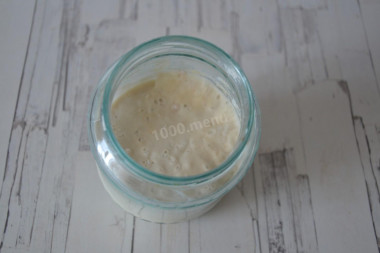
After a day, your starter culture will increase significantly in size. And a lot of bubbles will appear.
Step 8:
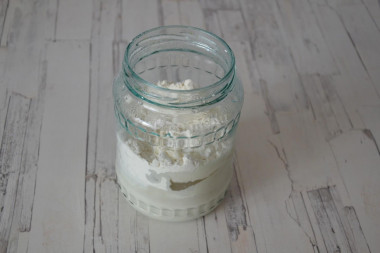
Feed the starter 50 g of flour and 50 ml of water. Mix again and put in a warm place for a day.
Step 9:
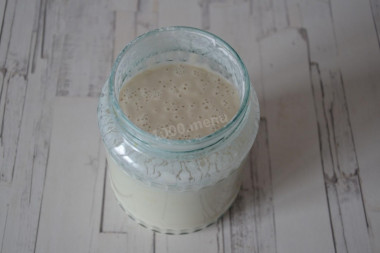
Repeat the top dressing 2-3 more times. The finished starter can be used for 6-7 days. The finished starter should smell moderately, the smell should not be musty. It should not smell of mold or rot. The smell should be sour. The taste of the finished sourdough is also sour. The consistency of the finished starter is like thick sour cream.
According to the same recipe, you can make a sourdough from rye flour for rye bread. Rye sourdough is even more active than wheat. And it reaches maturity faster - already on the 5th day it can be used.
What you need to know when removing sourdough:
- a sign of fermentation - bubbles and an increase in volume.
- the temperature should be 24-27 degrees.
- sourdough should be mixed exactly like thick sour cream. If it is mixed with its liquid, like kefir, then it will delaminate and starve. If it is thick, like cottage cheese, then it will be difficult for it to ferment at room temperature and gain acidity.
- flour must be fresh - it should take no more than two months from the release date. Another factor is the amount of grinding. It is difficult to remove the starter culture on coarse flour.
- cover the jar with sourdough with a double layer of gauze, a cloth, but not a plastic lid, and do not forget to sift the flour.
Caloric content of the products possible in the composition of the dish
- Whole durum wheat flour fortified - 333 kcal/100g
- Whole durum wheat flour, universal - 364 kcal/100g
- Flour krupchatka - 348 kcal/100g
- Flour - 325 kcal/100g
- Water - 0 kcal/100g

